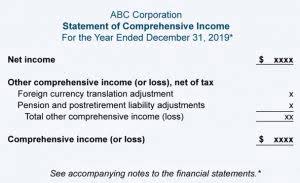Content

Dividends Declared has a debit balance and is a contra account to Retained Earnings. So, essentially, all these situations are mistakes that people could make. The only real reason you would want to have asset accounts with a credit balance is if they were intentionally set up as a contra asset account. Before you issue a balance sheet, fix any errors and reclassified any asset accounts with a credit balance as a liability. Sales returns, sales allowance and sale discounts are different examples of contra revenue accounts. Contra accounts such as these have a debit balance and are deducted from the total amount of a company’s revenue. Accumulated depreciation is an asset account with a credit balance known as a long-term contra asset account that is reported on the balance sheet under the heading Property, Plant and Equipment.
- Contra accounts may have a zero balance in some cases, though the actual instances of this may be rare.
- Contra assets may be stated in separate line items on the balance sheet.
- Normal asset accounts have a debit balance, while contra asset accounts are in a credit balance.
- In either case, the net amount of the pair of accounts is referred to as the book value of the asset account in question.
- Likewise, separating the allowance for bad debt from accounts receivable lets you calculate the profitability of your sales team.
- By reporting contra accounts on the balance sheet, users can learn even more information about the company than if the equipment was just reported at its net amount.
The size of the reserve also reveals the amount of bad debt that the company expects to experience from the current set of receivables. Contra asset accounts get their name “contra” because they include a credit balance. These go against the normal asset accounts, which have a debit balance. In essence, contra asset accounts have a negative balance while other asset accounts have a positive balance. Both of these accounts offset each other to represent a net balance on a company’s balance sheet. Overall, contra accounts are offsetting balances that are the opposite of specific accounts.
Types Of Contra Assets
Home Depot reports that returns are estimated at the time of the sale based on historic returns numbers. The amount is not reported, and the net sales amount is reported on the income statement. In footnote 3, the company reports, “Net property and equipment includes accumulated depreciation and amortization of $25.3 billion as of August 1, 2021 and $24.1 billion as of January 31, 2021.” Trade accounts receivable refer to an amount that a company bills to its clients when delivering goods or services. These billings may usually be documented on invoices, which are then summarized in an aging report for all the business’s accounts receivable. She is an expert in personal finance and taxes, and earned her Master of Science in Accounting at University of Central Florida.
However, they will still appear on the notes to the financial statements with necessary disclosures. A contra account is an account that companies use to reduce the value of a related account. It usually nets off against related accounts and provides an opposite effect to the balance.
The https://www.bookstime.com/ then allows recording of the value factoring in depreciation. The bad debt, or allowance for doubtful accounts has a credit balance to offset the value of accounts receivable. The outstanding balance of a contra asset account represents a credit figure. These accounts are maintained individually and are adjusted from the corresponding asset’s balance to show the net amount of the assets in financial statements. Contra Asset Account – A contra asset account is an asset that carries a credit balance and is used to decrease the balance of another asset on the balance.
- The account Allowance for Doubtful Account is credited when the account Bad Debts Expense is debited under the allowance method.
- Notwithstanding any such relationship, no responsibility is accepted for the conduct of any third party nor the content or functionality of their websites or applications.
- The bond is listed on the balance sheet at the full amount of $1,000, but the cash received is just $950, so a contra liability for the discount is listed to make the entry balance.
- While accumulated depreciation is the most common contra asset account, the following also may apply, depending on the company.
- An adjunct account is an account in financial reporting that increases the book value of a liability account.
- In most cases, these accounts will not show up on a standard balance sheet, which is the financial statement that contains all asset accounts.
A contra liability account is the lesser known type of a contra account. The most known type of a contra asset account is the Accumulated Depreciation which reduces the amount of Fixed Assets. Another type of contra account is known as “contra revenue,” which is used to adjust gross revenue to calculate net revenue, i.e. the “final” revenue figure listed on the income statement. Learn why contra accounts, when utilized correctly along with a paired account, are a crucial component of accurate accounting and financial review. If you’re valuing a low-growth company based on its equipment assets, you want to use the net value to be conservative. On the other hand, if you’re looking at a high-flying growth stock that reports new revenue growth records each quarter but has a massive allowance for doubtful accounts, there may be problems ahead. Accumulated amortization is an account similar to accumulated depreciation.
Consequently, in the first year, the equipment would reflect a net value of $90,000, which is computed by deducting the accumulated depreciation from the equipment’s historical cost. These assets are expected to provide future economic benefits for many accounting periods. So, organizations do not expense the amount incurred to acquire them. The amount spent on their purchase is capitalized and treated as assets.
Contra Accountdefinition, Types, Uses, And How To Set Them Up
The main contra equity account is treasury stock, which is the balance of all stock repurchased by the company. When a company repurchases shares, it increases the fractional ownership of all remaining shareholders. Contra asset accounts also provide a clear picture of the accumulation of assets the companies have. Similarly, these accounts can also be essential in various calculations. As mentioned, companies do not represent these accounts on the balance sheet.
It’s ok to have a credit balance in an accumulated depreciation asset account, but the net value of an asset should never go below zero. Contra asset accounts aren’t the only way that asset accounts can carry a credit balance. The amount on the equity contra account is deducted from the value of the total number of outstanding shares listed on a company’s balance sheet. Depreciation is the method of accounting used to allocate the cost of a fixed asset over its useful life and is used to account for declines in value. It helps companies avoid major losses in the year it purchases the fixed assets by spreading the cost over several years. The annual amortization of the cost of an asset is referred to as depreciation expense. The corresponding effect is charged to accumulated depreciation accounts.
If a listed company purchases its own shares from the open market, it will have to debit the treasury stock account in order to record the transaction. A company might decide to purchase its stock when the board of directors feel the stock is undervalued or when it wishes to pay its shareholders dividends. Contra asset is used to offset or reduce the balance of the corresponding asset account in the balance sheet. Reducing or offsetting the gross value of an asset with the corresponding contra asset will give us the net value of the asset. The total decrease in the value of an asset on the balance sheet over time is accumulated depreciation.
Presentation Of Contra Asset Accounts
Apple breaks out its amount of property, plant, and equipment (PP&E) and then lists its accumulated deprecation that reduces the PP&E figure. Contra equity reduces the total number of outstanding shares on the balance sheet.

This account only relates to a company’s intangible assets rather than tangible. Any company that owns intangible assets such as software, patent, etc., will maintain an accumulated amortization account. Similar to depreciation, this account plays a significant role in representing the book value of a company’s assets. An allowance for doubtful accounts is a contra-asset account that reduces the total receivables reported to reflect only the amounts expected to be paid. A general ledger is the record-keeping system for a company’s financial data, with debit and credit account records validated by a trial balance. The allowance method of accounting allows a company to estimate what amount is reasonable to book into the contra account. The percentage of sales method assumes that the company cannot collect payment for a fixed percentage of goods or services that it has sold.
When recording assets, the difference between the asset’s account balance and the contra account balance is the book value of the asset. The balance in the allowance for doubtful accounts is used to find out the dollar value of the current accounts receivable balance that is deemed uncollectible. The balance sheet shows the amount in the asset section underneath the accounts receivable.
How Do Convertible Bonds Affect A Balance Sheet?
In either case, the net amount of the pair of accounts is referred to as the book value of the asset account in question. When a contra asset account is not stated separately in the balance sheet, it may be worthwhile to disclose the amount in the accompanying footnotes, where readers can readily see it. Similarly, the company may choose to combine the amounts in both its contra and fixed asset accounts if the contra asset account has a relatively low balance. Include buildings, machinery, office equipment, furniture, vehicles, etc. The accumulated depreciation account appears on the balance sheet and reduces the gross amount of fixed assets.
It is considered a contra asset account because it contains a negative balance that intended to offset the asset account with which it is paired, resulting in a net book value. Allowance for doubtful accounts is a common contra asset listed on a company’s balance sheet under accounts receivable. When a company sells its products or services to customers on credit, the company records the amount sold in its accounts receivable account. Typically, a company fails to collect all of the money owed by customers making purchases on credit. The amount a company records as allowance for doubtful accounts is the amount from its accounts receivable the company considers uncollectible. Most accountants choose to record the depreciation over the useful life of an item in the accumulated depreciation contra asset account, which is a credit account. The balance sheet would show the piece of equipment at its historical cost, then subtract the accumulated depreciation to reflect the accurate value of the asset.

A liability that is recorded as a debit balance is used to decrease the balance of a liability. Contra Liability a/c is not used as frequently as contra asset accounts.
Regardless of that, allowance for receivables accounts will exist for all companies that have account receivable balances. This account helps companies present a more accurate accounts receivable balance on the financial statements. A contra account is used for account classification and is also reported in a company’s financial statement alongside its corresponding or related account.
Contra Accounts
When reporting a contra account in a company’s financial statement, it is reported immediately below the account it relates to or corresponds. Contra accounts have different names depending on the account they correspond. For instance, a contra account that relates to an accounts receivable is called a contra asset account. This type is paired with the asset account, which allows a business to record the original price or value of the asset at time of purchase.
The auditors want to ensure that reserves are adequate, while the controller is more inclined to keep reserves low in order to increase the reported profit level. Note that accountants use contra accounts rather than reduce the value of the original account directly to keep financial accounting records clean. Now let’s focus our attention on the two most common contra assets – accumulated depreciation and allowance for doubtful accounts. Debit cards and credit cards are creative terms used by the banking industry to market and identify each card.
Put simply, contra accounts are used to reduce the normal accounts on the balance sheet. If the related account has a debit as the natural balance, Contra Asset Account then the contra account will record a credit. So, contra assets have a credit balance, whereas assets normally have a debit balance.
Accountants use contra accounts rather than reduce the value of the original account directly to keep financial accounting records clean. If a contra account is not used, it can be difficult to determine historical costs, which can make tax preparation more difficult and time-consuming.
Academic Research On Contra Accounts
Although a bond discount is a contra liability account, it cannot be considered as a liability since no future obligation can be expected from it. The net amount – i.e. the difference between the account balance post-adjustment of the contra account balance – represents the book value shown on the balance sheet.
Allowance for doubtful accounts is a contra asset account used to create an allowance for customers that are not expected to pay the money owed for purchased goods or services. The allowance for doubtful accounts appears on the balance sheet and reduces the amount of receivables. Likewise, separating the allowance for bad debt from accounts receivable lets you calculate the profitability of your sales team. Other examples of contra accounts deal with variables where the exact value is unknown.